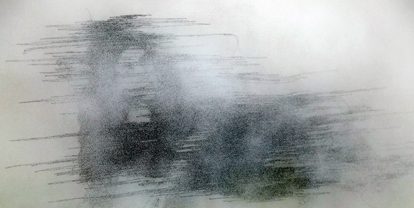Haft Paykar
Curated by Natasha Chuk & Tooraj Khamenehzadeh
May 17 — June 07, 2019
“Haft Paykar | Seven Beauties” is a group exhibition that revives, explores, and shares an ancient Persian text through an exercise in reception theory, adopting Stuart Hall’s concept of encoding/decoding as a means of meaning-making of literary and other texts. This cultural theory fosters the idea that the meaning of any text is never fixed or transparent, rather shaped by a number of contributing factors by both the producer, who encodes a text with meaning, and the recipient, who decodes it. Interpretation is further shaped by distribution, personal experience, social circumstance, and other contextual contributors to meaning and understanding, including space and time.
The curators selected a 12th century poem as the starting point for participating artists and audience to interpret and produce meaning. Haft Paykar was written by the Persian poet Nizami Ganjavi, better known as Nizami, in 1197. It incorporates themes of exploitation, ambiguity, beauty, symbolism, multiculturalism, and self-actualization through various literary devices, including non-linearity and epic storytelling. A key component is the assemblage of the seven beauties, or seven brides, who are summoned by the story’s protagonist, a heroic prince. Each beauty originates from a different region of the world and is represented by a different color, day of the week, and planet, which correspond to her mood and shape her character.
Seven female artists were selected to participate in this exhibition, and they originate from the same seven regions, or “climes,” represented in the poem: Naiza Khan (Pakistan), Cui Fei (China), Anna Khordorkovskaya (Khwarazm/Russia), Neža Knez (Siqlab/Slovenia), Nicène Kossentini (the Magreb/Tunisia), Nina Papaconstantinou (Rum/Greece), and Negin Mahzoun (Persia/Iran). The section from the poem concerning the seven beauties was used as source material for each participating artist as a prompt for a new work that illustrates the results of their interpretations and exercise in decoding/encoding meaning. Their work represents a wide range of creative approaches, media, and interpretations of the text to bring this ancient work, ideas, and cultural values into a contemporary context. They play with form, materials, scale, aspects of time and space, language, metaphor, memory, geographies, and identity to draw out, contemplate, and interrogate various aspects of the original text.
To illustrate and extend the effects of reception theory, audiences are presented with selections from the original text alongside the artists’ creative interpretations, which will allow visitors to interpret and decode meaning from the source material. The addition of the excerpts offers both an opportunity for a variant of the interactive engagement afforded to the artists, and will inform and shape visitors’ understanding of the artists’ interpretations. The purpose is to encourage many levels of participation and meaning-making in this theoretical framework as a means to emphasize its significance and function. This will invariably lead to variances in the engagement with denotative, connotative, and mythological meaning, to thereby build on, encourage new, and challenge existing interpretations of cultural values and understandings of concepts such as beauty, heroism, nationality, gender, and knowledge. Moreover, in keeping with the rubric of medieval epic poetry, a key aim of this exhibition is to introduce, advance, and extend the cultural impact and magnitude of this ancient text. The adoption of reception theory as the basis of this exhibition thus animates an exchange between an ancient text, the curators, participating artists, and the general public.
Additionally, the multifaceted nature of creation, repetition, and variation through sharing suits our 21st century practices of non-linear storytelling and the distribution and advancement of information and ideas, informed by disparate creators and recipients around the world. Additionally, the exhibition alludes to shifting global contexts, political alliances, and geographic borders over time: Nizami, an Iranian national hero of poetry, is also claimed by neighboring Azerbaijan as their own. Likewise, the participating artists engage, in their own ways, a poetics of citizenship, living and working in places all over the world, sometimes far from their nations of origin.
Natasha Chuk and Tooraj Khamenehzadeh






